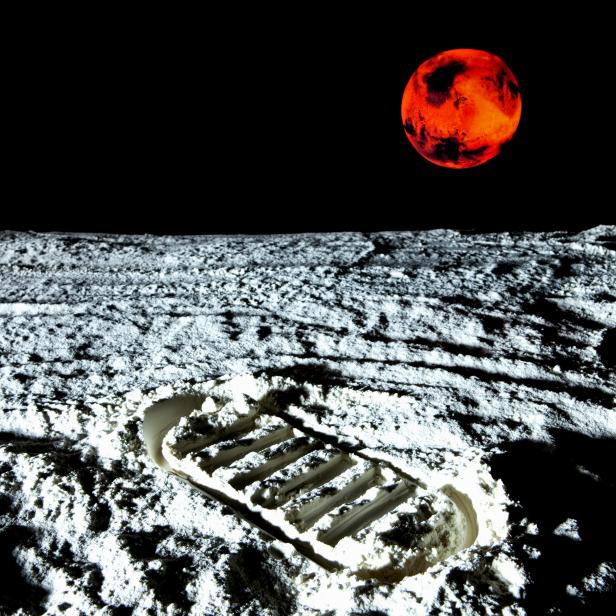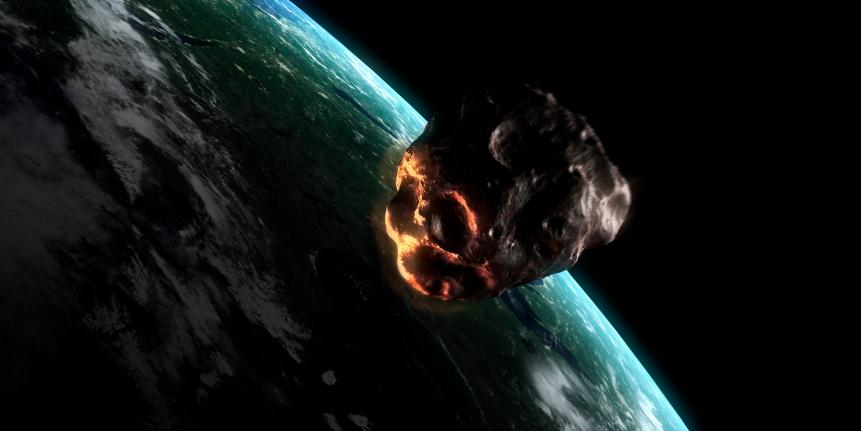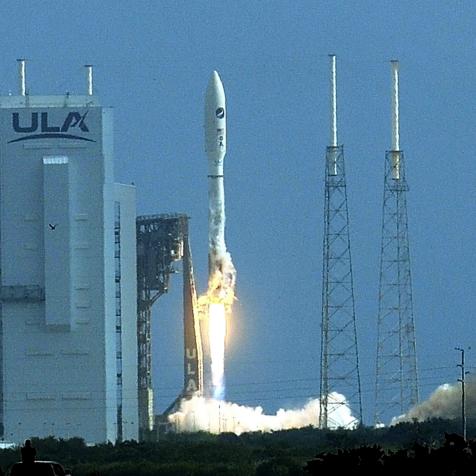
Caspar Benson
The Future of Space Exploration

Over the past couple decades, the space-minded folks around the world have debated the relative merits of the two possible destinations for space exploration. Moon or Mars?
Mars versus the moon. The moon versus Mars. Earth’s only natural satellite versus the red planet. Over the past couple decades, the spacey-minded folks around the world have debated the relative merits of the two possible destinations for exploration and – in their most wistful dreams – colonization.

While the moon is close, meaning relatively easy access, it’s old hat: our grandparents sent people there, sheesh. Mars is fresh and new and exciting (and very, very red), but about half of all robotic missions there end up either flying off course or smashing themselves to bits on the surface.
A round-trip to the moon is about a week, give or take a few days. A round-trip to Mars is about two years, give or take a few months. But on the other hand, Mars has stronger gravity, more (frozen) water, and of course the unmistakable gleam of something new.
And so, the debates go on and on, back and forth, with the community currently leaning towards the moon (as evidenced by NASA’s Artemis program). But just wait another few years and I’m sure Mars will be on the lips on every space geek once again.
Let Me Offer Another Idea

SCIEPRO
The problem with both Mars and the moon is that they’re heavy. They have gravity. To do anything other than orbit around them, you have to descend to their surfaces, which requires tons of resources--In order to escape the Earth, you have to travel at tens of thousands of miles per hour, and to safely land on the surface of another world, you have to bring that speed all the way back down to zero.
And want to make it a round trip? Then you have to launch from those surfaces back into space.
Ugh. Once you’ve left the Earth, you’ve already done an incredible amount of work. Why add to that burden by picking another big gravity well to explore?
Why don’t we instead aim for an asteroid? Most asteroids are very far away – past the orbit of Mars. But a few share orbits with the Earth or just generally hang around the inner solar system, making them (relatively) easily accessible.
Sure, asteroids are tiny and have barely any gravity, meaning that long-term habitation isn’t really an option. That is, unless we spin things up a bit. Spinning up an asteroid allows us to exploit the centrifugal force to create artificial gravity (the same way you’re pressed to the sides of a spinning carnival ride, whether you like it or not). While not an easy thing to do, if we’re playing the game of “let’s colonize the solar system” it’s not the worst idea.
The best part: the asteroid can be towed to Earth's orbit, providing easier-than-the-moon access.
Did I mention that asteroids are full of minerals, frozen water, and rare elements? Everything you need to kick-start your interplanetary adventures, without even breaking a sweat. And since they’re so small, you don’t have to do all the work of lugging your stuff down to the surface or back out again. Getting to an asteroid is as easy as waltzing through space itself.
So in the perennial moon-vs-Mars debate, why don’t we stop to consider the third candidate: neither?



















